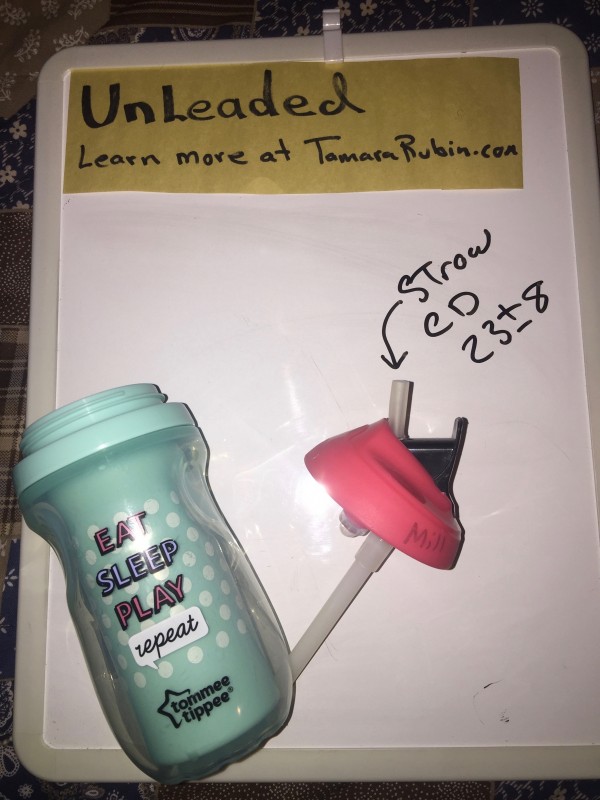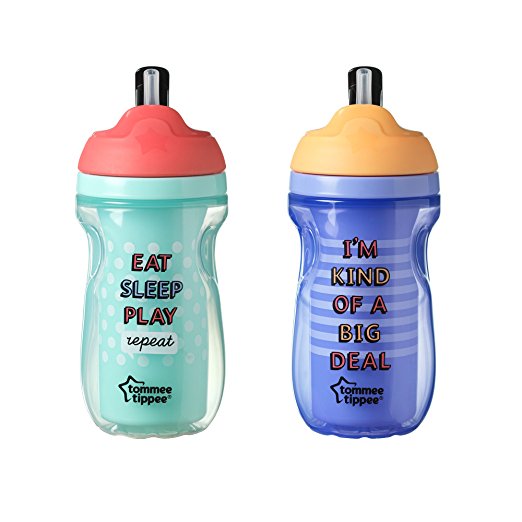Tommee Tippee sippy cup w/ integrated silicone straw: No Pb, Hg or As – but positive for trace Cadmium in the straw.
When tested with an XRF instrument the Tommee Tippee Sippy Straw Cup pictured below (tested in March of 2017) had the following readings:
The main plastic components of the cups (lid and cup):
- Lead (Pb): NonDetect/ ND (negative)
- Arsenic (As): NonDetect/ ND (negative)
- Mercury (Hg): NonDetect/ ND (negative)
- Cadmium (Cd): NonDetect/ ND (negative)
The clear silicone integrated sippy straw:
- Lead (Pb): NonDetect/ ND (negative)
- Arsenic (As): NonDetect/ ND (negative)
- Mercury (Hg): NonDetect/ ND (negative)
- Cadmium (Cd): 23 +/- 8 ppm.
This amount of Cadmium is considered safe by all standards and is a level of Cadmium that I have often found in silicone products. The State of Washington considers an item unsafe with total detectable Cadmium over 40 ppm. The Country of Denmark considers an item unsafe with total detectable Cadmium over 75 ppm. There is no U.S. federal standard for total Cadmium content (vs. Leachable Cadmium – which is a different standard) in dishware or sippy cups.
To learn more about the concerns for Cadmium in consumer goods, click here.
To see this exact product online click here!*
For more #SaferChoices for your family, click here!
Learn more about XRF Testing here.
Please consider contributing in support of my independent consumer goods testing & childhood lead poisoning prevention advocacy work here or here.
Thank you for reading and for sharing my posts.
Please let me know if you have any questions at all!
Tamara Rubin
#LeadSafeMama
Amazon links are affiliate links. If you purchase something after clicking on one of my links I may receive a small percentage of what you spend at no extra cost to you.

Never Miss an Important Article Again!
Join our Email List




hello,
Have these cups been tested since 2017? What about this brand of pacifiers? We have been using these pacifiers for 20 months and these straw cups for 6 months 🙁
Have you reached out to the company to see if they’ve since changed their product to make it safe? I was Reading that no amount of cadmium is safe for children.
Thank you